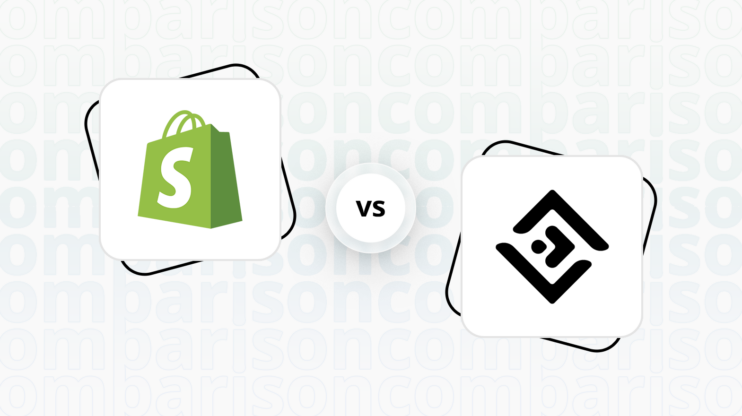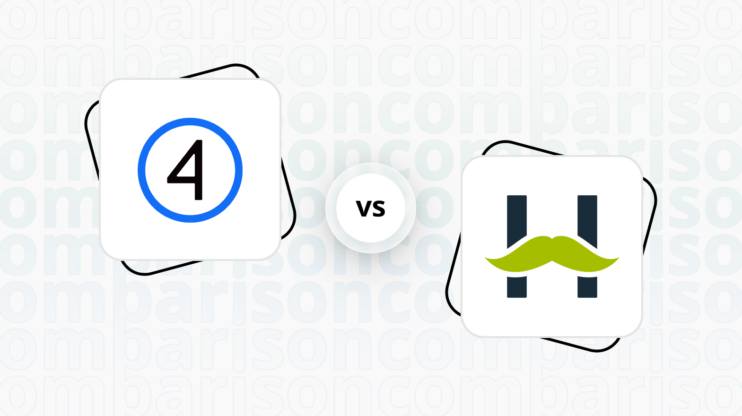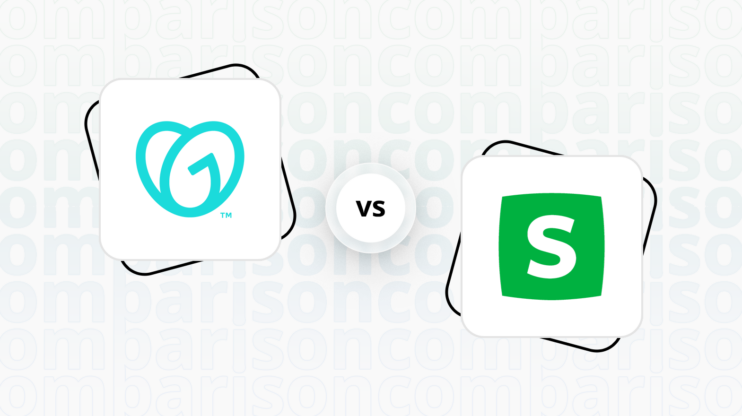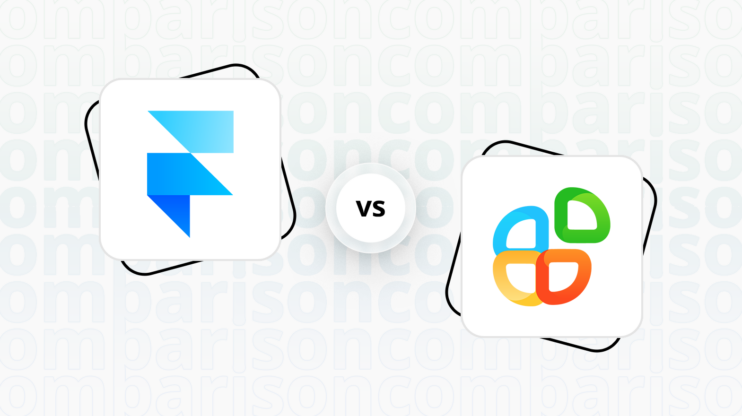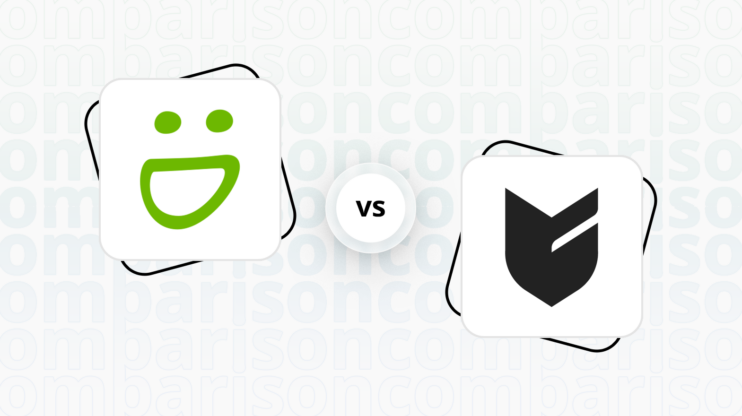Final verdict
Showit and SubHub both offer specialized platforms, but they cater to different user needs and preferences.
-
Showit (Overall Grade: 6.4/10)
is a versatile website builder designed for creative professionals such as photographers, designers, and bloggers. It excels in providing extensive design functionalities and templates, making it ideal for users who prioritize creative control and customization. Showit’s dual canvas interface and seamless integration with WordPress for blogging are standout features. When comparing Showit vs SubHub, Showit is the preferred choice for those seeking a highly customizable and visually appealing website. -
SubHub (Overall Grade: 5.6/10)
is tailored for creating and managing membership sites, offering a range of tools for content creators and entrepreneurs. It simplifies the process of setting up subscription models and managing member access, making it a strong contender for those looking to monetize their content. While it may not offer the same level of design flexibility as Showit, SubHub’s focus on membership and content monetization makes it a viable option for building a community-driven website.

|

|
|
|---|---|---|
|
Design functionalities & templates |
8.5 |
6.8 |
|
Ease of use |
8.6 |
7.7 |
|
Ecommerce |
4.8 |
5.9 |
|
Website Editors |
8.0 |
6.9 |
|
Product testing options |
8.3 |
7.0 |
|
Price |
7.9 |
6.8 |
|
Hosting quality |
7.3 |
5.5 |
|
Website speed optimization |
5.4 |
5.6 |
|
Plugins and integrations |
5.8 |
5.7 |
|
Marketing features |
7.2 |
5.7 |
|
Customer support |
6.4 |
6.3 |
|
Security |
8.3 |
4.0 |
|
User Management |
6.7 |
5.2 |
Best for ecommerce
 4.8
4.8
 5.9
5.9
Verdict
: Showit and SubHub cater to different ecommerce needs. Showit is better suited for users who prioritize design flexibility and are willing to integrate third-party ecommerce solutions, while SubHub offers a more comprehensive and built-in ecommerce experience.
-
Showit
: Showit is primarily a design-focused website builder with basic ecommerce capabilities through integrations with platforms like Shopify and WooCommerce. It is ideal for creative professionals who need a highly customizable website and are comfortable using third-party tools for ecommerce functionalities. However, its ecommerce features are limited compared to SubHub. -
SubHub
: SubHub excels in providing a robust ecommerce solution tailored for membership sites and content monetization. It supports the sale of physical and digital products, pay-per-view content, and offers built-in payment processing through Stripe and PayPal. SubHub is a better choice for users looking for an all-in-one platform to manage their ecommerce needs without relying heavily on third-party integrations.
Best for informational & business websites
 8.7
8.7
 7.2
7.2
Verdict
: Showit is the superior choice for creating visually appealing and highly customizable informational websites, while SubHub is more suited for membership-based business sites.
-
Showit
: Showit excels in providing a high degree of customization and control over the website’s appearance, making it ideal for creative professionals. Its drag-and-drop interface and dual canvas design for mobile and desktop views offer unparalleled design flexibility. With a score of 8.7, Showit is particularly well-suited for users who want to create visually stunning informational websites without needing to write code. The integration with WordPress for blogging further enhances its capabilities, making it a robust choice for those who prioritize design and aesthetics. -
SubHub
: SubHub, scoring 7.2, is designed specifically for creating and managing membership sites. It offers tools tailored for content creators and entrepreneurs who aim to build a community and monetize their content. While it provides a user-friendly platform with a focus on ease of use and customer support, it lacks the creative control and design features that Showit offers. SubHub is best suited for those looking to start or grow their membership-based business, providing a professional and secure website without needing advanced technical skills.
Detailed comparison
Design functionalities & templates
Design FunctionalitiesRepresents how well each platform allows for creative design and customization of websites.Score Components:
- Template Variety (30%): Range and quality of design templates.
- Customization (30%): Flexibility and options for design alterations.
- User Interface (20%): Ease and intuitiveness of the design process.
- Responsiveness (10%): Adaptability to different devices and screen sizes.
- Innovation (10%): Unique design features and tools.
 8.5
8.5
 6.8
6.8
🏆
Winner: Showit.
If you’re looking for a platform that offers more creative control and a wide array of design features, Showit is the preferred choice.
Showit offers a wide variety of templates and designs, catering to diverse aesthetic preferences and business needs. Users can choose from an extensive collection that ranges from minimalist and sleek to bold and artistic, ensuring there’s something for every brand identity. The platform is known for its flexibility and user-friendly interface, allowing for easy customization of templates.


Compared to Showit, SubHub offers a variety of customizable membership website templates designed to cater to different needs and themes. However, it lacks the creative control and design features that Showit offers.
Get a head start on website creation with AI
Create a custom website tailored to your business needs 10X faster with 10Web AI Website Builder!
Ease of use
Ease of useReflects the platform’s overall user-friendliness.Score
Components:
- Learning curve (40%): Quickness and ease of getting started.
- Interface design (30%): Simplicity and intuitiveness of layout.
- User guidance (20%): Quality of tutorials and support.
- Flexibility (10%): Adaptability to various user skills.
 8.6
8.6
 7.7
7.7
🏆 Winner: Showit
. With a score of 8.6, Showit is a highly user-friendly website builder, designed with a drag-and-drop interface that makes it easy for users to create custom websites without needing any coding knowledge. SubHub, scoring 7.7, offers a user-friendly platform designed for building membership websites and online courses, with a focus on ease of use and customer support. However, Showit’s higher score and design flexibility make it the winner in this category.
Learning Resources
🏆 Winner: Showit
. Both platforms offer a range of learning resources, but Showit goes a step further with a comprehensive training course, a more informal learning hub with videos, and a private Facebook group for community advice and peer support.
For ecommerce
EcommerceMeasures the platform’s effectiveness in supporting online business activities.Score Components:
- Ecommerce themes and templates (20%): Variety and design of templates.
- Product management (25%): Ease of managing and organizing products.
- Payment options (25%): Variety and convenience of payment methods.
- Ecommerce features (20%): Features for managing an ecommerce store.
- Integration (10%): Compatibility with external e-commerce tools and services.
 4.8
4.8
 5.9
5.9
Showit and SubHub offer different ecommerce capabilities, catering to different user needs. Showit, primarily a website builder focused on design, offers basic ecommerce functions and allows integration with Shopify and WooCommerce for enhancing ecommerce capabilities. SubHub, on the other hand, supports various ecommerce features including sales of physical goods, digital products, and pay-per-view content.

|

|
|
|---|---|---|
|
Ecommerce themes and templates |
2.0 |
3.0 |
|
Product page customization |
2.5 |
6.5 |
|
Payment processing and commissions |
4.0 |
7.0 |
|
POS capabilities |
1.0 |
0.0 |
|
Payment gateways |
4.5 |
6.0 |
|
Product numbers |
3.0 |
5.0 |
|
Additional ecommerce features |
3.5 |
4.5 |
Showit ecommerce features:
- Shopify and WooCommerce integration
SubHub ecommerce features:
- Paypal and Stripe integration
- Physical and Digital product listings
- Pay-per view products
Ecommerce themes & templates
Showit does not have any ecommerce specific templates. Similarly, SubHub does not offer ecommerce specific templates. Both platforms focus more on the functionality of their ecommerce offerings rather than providing specific ecommerce templates.
Product page customization
Showit has very basic ecommerce capabilities, primarily through its integration with WooCommerce and Shopify. The SubHub website builder offers a range of product page customization options, allowing for the addition of physical items, digital downloads, and pay-per-view content. Features include the ability to manage product variants, upload images, and set visibility preferences. Users can also implement SEO strategies through meta tags and manage tax settings. Additional functionalities include member-specific discounts, image carousels, and individualized shipping costs.
Payment processing
Showit supports e-commerce by allowing integration with third-party platforms like Shopify Lite, ThriveCart, WooCommerce, and Podia, rather than offering direct payment processing or POS capabilities. Users can add e-commerce functionalities to their Showit sites using embed codes for “Buy Buttons” or similar features from these platforms. The choice of platform depends on the user’s specific needs, including product type, store size, and budget, as each platform has its own pricing and transaction fee structures. Additionally, the platform supports integration of PayPal pay button, allowing users to pay directly through their PayPal account.
SubHub website builder supports two main payment gateways: Stripe and PayPal. These integrations allow for secure payment processing for subscriptions and store items using debit or credit cards. The platform itself does not charge commissions on transactions.
Considering the features, availability, cost, and flexibility, SubHub appears to be a more robust and flexible ecommerce solution compared to Showit. However, if you are looking for a platform with high design flexibility and are willing to integrate with third-party ecommerce platforms, Showit might still be worth considering.
Website Editors
Website EditorsEvaluates the platforms’ website building and editing capabilities.Score Components:
- Customization tools (40%): Range and power of editing features.
- Editor usability (30%): User experience within the editor.
- Design flexibility (20%): Freedom in layout and design changes.
- Update and maintenance ease (10%): Simplicity of updating and maintaining the site.
 8.0
8.0
 6.9
6.9
🏆
Winner: Showit
. Showit, with a score of 8.0, is a drag-and-drop website builder designed primarily for creative professionals. It offers users the ability to create custom, mobile-responsive websites without needing to write code. Showit’s unique feature is its dual canvas interface, which allows for the independent design of mobile and desktop views, providing a high degree of customization and control over the website’s appearance on different devices. The platform integrates seamlessly with WordPress for blogging, making it a popular choice for users who want the design flexibility of Showit for their site’s look and feel, with the powerful blogging capabilities of WordPress.
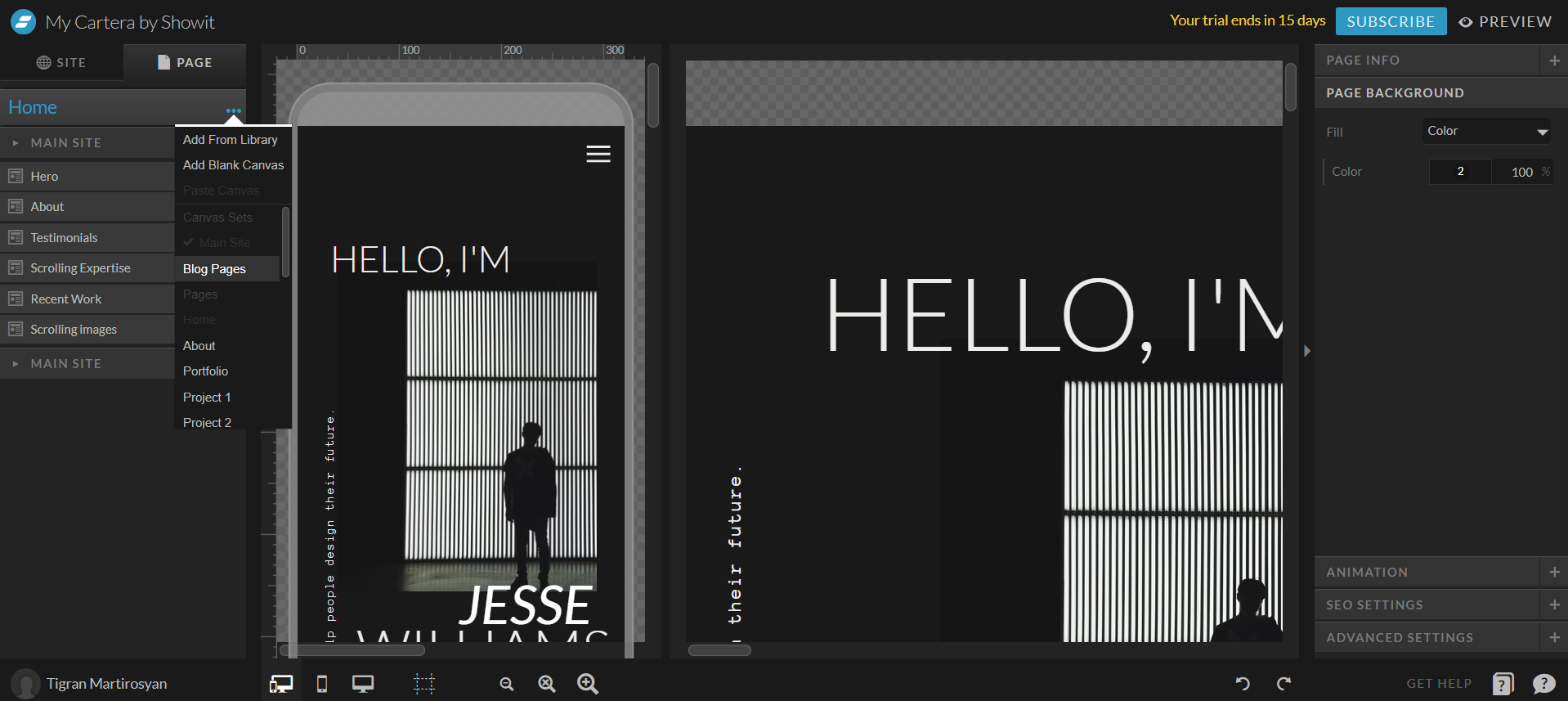
SubHub, scoring 6.9, is a website builder designed specifically for creating and managing membership sites. It offers a range of tools tailored for content creators and entrepreneurs who aim to build a community and monetize their content. The platform simplifies the process of setting up subscription models, managing member access, and providing exclusive content, making it an ideal choice for those looking to start or grow their membership-based business.
Mobile editor/app
 0
0
 4.0
4.0
🏆
Winner: SubHub
. Both Showit and SubHub do not offer a dedicated mobile editor app. However, SubHub allows users to manage some content on their website using the mobile browser version, while Showit does not support editing a website using a mobile browser version. Therefore, SubHub is the winner in this category due to its slightly better mobile editing capabilities.
Product testing options
Product Testing OptionsAssesses the options for trying out platform features before commitment.Score Components:
- Trial quality (40%): Extent and usefulness of the trial or free version.
- Feature accessibility (30%): How many features are available to test.
- Trial duration (20%): Length of the trial period.
- Ease of transition (10%): Smoothness of moving from trial to paid plans.
 8.3
8.3
 7.0
7.0
Overall Result
:
Showit Wins
. Showit scores 8.3 in product testing options, while SubHub scores 7.0. Both platforms do not offer a free version, but they provide a 14-day free trial. During this period, users can test all the premium features. However, Showit stands out with its 30-day money back guarantee, which is significantly longer than SubHub’s 7-day money back guarantee.

|

|
|
|---|---|---|
|
Free Plan |
No | No |
|
Trial Duration |
14 days | 14 days |
|
Testing Premium Features |
All features during free trial |
All features during free trial |
|
Money Back Guarantee |
30 days |
7 days |
Price
PriceLooks at the cost-effectiveness and value for money of each platform.Score Components:
- Plan value (40%): What each pricing tier offers.
- Transparency and clarity (30%): Clearness of pricing structures.
- Flexibility of plans (20%): Range of options to suit different budgets.
- Hidden costs (10%): Additional expenses not included in the plan.
 7.9
7.9
 6.8
6.8
Showit and SubHub offer a range of pricing plans to cater to different needs.
Showit’s plans are more affordable, starting at $24 per month, and they also offer a custom plan for high-traffic blogs. SubHub’s plans start at $47 per month, but they do not offer an enterprise plan. Both platforms offer discounts on annual billing, with Showit offering a higher discount of around 20-25%.

|

|
|
|---|---|---|
|
$20-$25 |
Showit ($24/month): Ideal for sites without a blog. Includes 20GB storage and secure certificate. Regular design backups stored for 7 days. Value for price: 6.0 |
No offering at this amount. |
|
$25-$30 |
Showit + Basic Starter Blog ($29/month): For new blogs. Includes everything in the Showit plan, plus blog-specific features. 20GB storage, up to 10k monthly visitors, daily backups stored for 30 days, pre-installed plugins (no additional plugins are permitted), 1 WordPress user. Value for price: 7.0 |
No offering at this amount. |
|
$30-$50 |
Showit + Advanced Blog ($39/month): For migrating or high-traffic blogs with custom plugin needs. Includes everything in the Basic Starter Blog plan, plus up to 25k monthly visits, unlimited number of plugins, unlimited number of WordPress users, Free advanced blog migration from WordPress or Squarespace and FTP access. Value for price: 8.0 |
Starter ($47/month): Up to 500 members, 5 GB storage, secure payment processing, course builder, 5 landing pages, e-commerce. Value for price: 6.5 |
|
$60-$100 |
Showit + Advanced Blog 50k ($69/month): Includes everything in the Showit + Advanced Blog plan, with possibility to install custom WordPress plugins, 30 GB storage, up to 50k visitors monthly, and possibility to migrate Squarespace and WordPress blog posts. Value for price: 8.5 |
Pro ($97/month): Up to 2000 members, 50 GB storage, removes SubHub branding, 15 landing pages, along with Starter features. Value for price: 7.5 |
|
$100+ |
Showit + Advanced Blog 100k ($129/month): Includes everything in the Showit + Advanced Blog plan, with possibility to install custom WordPress plugins, 50 GB storage, up to 100k visitors monthly, and possibility to migrate Squarespace and WordPress blog posts. Value for price: 9.0 |
Premium ($147/month): Unlimited members, 200 GB storage, email white labelling, 30 landing pages, plus all Pro features. Value for Price: 8.5 |
location. As a result in rare cases the prices displayed here can differ from the ones you see on their
websites.
Hosting quality
Hosting
qualityExamines the reliability and performance of the hosting solutions.Score Components:
- Uptime (40%): Consistency and reliability of website availability.
- Speed (30%): Loading times and performance.
- Bandwidth and storage (20%): Sufficiency of resources provided.
- Data centers (10%): Quality and distribution of hosting infrastructure.
 7.3
7.3
 5.5
5.5
🏆
Winner: Showit
Showit offers managed WordPress hosting with a 99.9% uptime guarantee, making it a reliable choice for users. SubHub, on the other hand, does not provide uptime statistics or guarantees, which can be a concern for users who require high availability. Both platforms do not disclose information about their data centers, making it difficult to assess their global reach and redundancy.

|

|
|
|---|---|---|
|
Do they offer hosting? |
Yes, Managed wordpress hosting, with daily backups and 20GB storage. |
Yes, from 5GB to 200GB storage limitation depending on the plan and daily backups. |
|
Type of hosting: |
Managed WordPress hosting |
Managed Cloud Hosting |
|
Uptime: |
99.9% |
Not provided |
|
Uptime Guarantee: |
Yes, 99% |
Not provided |
|
Data Centers: |
Not disclosed |
Not disclosed |
Website Speed Optimization
Website Speed OptimizationEvaluates optimization of website loading timesScore Components:
- PageSpeed Score (30%): Google’s score indicating performance optimization.
- Loading Time (30%): The average time until a website is fully interactive.
- Mobile Optimization (15%): Optimization effectiveness for mobile devices.
- Resource Optimization (15%): Optimizing images, scripts, and other heavy resources.
- CDN Usage (10%): Use of CDN to enhance speed across geolocations.
 5.4
5.4
 5.6
5.6
🏆 Winner: SubHub
Both Showit and SubHub have similar website speed optimization scores, but SubHub edges out slightly ahead.

|

|
|
|---|---|---|
|
Focus |
Optimization plugins, Caching |
Image Optimization, Caching, Mobile Optimized design |
|
Performance Tools |
Not specified |
Not specified |
|
Key Strategies |
Optimization plugins, Caching |
Image Optimization, Caching, Mobile Optimized design |
|
Load Times |
Varies depending on optimization and website complexity |
Varies depending on optimization and website complexity |
|
Page Speed Scores Range |
Not specified |
Not specified |
|
Core Web Vitals Improvement |
Not disclosed |
Not provided |
Showit, a drag-and-drop website builder, focuses on optimization plugins and caching as their key strategies for speed optimization. However, they do not disclose any information on their Core Web Vitals improvements. The load times and PageSpeed scores vary depending on optimization and website complexity.
SubHub, a website builder designed for creating and managing membership sites, emphasizes on image optimization, caching, and mobile-optimized design for speed optimization. Like Showit, they do not provide any information on their Core Web Vitals improvements. The load times and PageSpeed scores also vary depending on optimization and website complexity.
Get a head start on website creation with AI
Create a custom website tailored to your business needs 10X faster with 10Web AI Website Builder!
Plugins and integrations
Plugins and integrationsMeasures the range and effectiveness of additional plugins and integrations.Score Components:
- Variety of options (40%): Range of available add-ons.
- Integration smoothness (30%): Ease of integrating plugins into the site.
- Quality of plugins (20%): Functionality and reliability of the options.
- Custom integration capabilities (10%): Support for custom or third-party integrations.
 5.8
5.8
 5.7
5.7
🏆 Winner: Showit.
Showit edges out SubHub with a score of 5.8 against 5.7. Showit offers a variety of plugins primarily for users with the Advanced Blog plan, enhancing website functionality across SEO, spam protection, and more. However, the availability and use of these plugins are contingent upon the subscription tier, with higher tiers required for broader plugin compatibility and additional features. Notably, compatibility issues exist with certain WordPress plugins, necessitating alternative solutions or adjustments for optimal functionality.
SubHub, on the other hand, is designed with a focus on simplicity and integrated functionalities for building membership-based websites, catering especially to users with minimal technical expertise. The platform offers a set of built-in features, including customizable designs, member management, and subscription management, along with limited third-party integrations primarily with MailChimp, Google Analytics, and payment gateways like Stripe and PayPal. While Subhub provides a comprehensive toolkit for creating and managing membership sites, its range of external integrations might be seen as limited compared to other website builders.
Marketing Features
Design FunctionalitiesRepresents how well each platform allows for creative design and customization of websites.Score Components:
- Template Variety (30%): Range and quality of design templates.
- Customization (30%): Flexibility and options for design alterations.
- User Interface (20%): Ease and intuitiveness of the design process.
- Responsiveness (10%): Adaptability to different devices and screen sizes.
- Innovation (10%): Unique design features and tools.
 7.2
7.2
 5.7
5.7
🏆
Overall Winner: Showit
. Showit stands out for its extensive third-party integrations for email marketing and social media, as well as its SEO-friendly design and Google Analytics integration. SubHub, while lacking in social media integration, offers built-in email marketing and SEO tools, making it a viable option for those focusing on membership and content monetization.

|

|
|
|---|---|---|
|
SEO Tools |
|
|
|
Email Marketing |
✓ (through third-party integrations) |
✓ (both built-in and through Mailchimp integration) |
|
Blogging |
|
|
|
Social Media Integration |
|
✗ |
|
Analytics and Reporting |
✓ (through Google Analytics integration) |
|
|
Ads and Promotions |
✓ (through third-party integrations) |
|
Customer Support
Customer supportEvaluates the quality and availability of support options.Score Components:
- Response time (40%): Speed of support responses.
- Support quality (30%): Effectiveness and helpfulness of the support.
- Availability (20%): Range of support channels (phone, chat, email).
- Resource richness (10%): Quality of self-help and educational materials.
 6.4
6.4
 6.3
6.3
🏆 Winner: Showit
. Comparing Showit vs SubHub, Showit edges out slightly in this category with a customer support score of 6.4 compared to SubHub’s 6.3. Showit offers email support from Monday to Friday, 7 AM to 11 PM Arizona Time, with a typical response time of 1-2 hours. They also provide chat support during business hours and limited support on weekends, ensuring users have multiple channels to seek help.
SubHub, on the other hand, provides customer support via email and a support portal where users can submit detailed requests. They also have an FAQ section for immediate answers to common questions. While SubHub’s support is accessible and responsive, it lacks the chat support option that Showit offers, which can be crucial for more immediate assistance.
Security
SecurityLooks at the platforms’ security measures and data protection.Score Components:
- Data protection (40%): Safeguards for user and customer data.
- SSL and encryption (30%): Implementation of secure connections.
- Compliance (20%): Adherence to industry security standards.
- Regular updates (10%): Frequency of security updates and patches.
 8.3
8.3
 4.0
4.0
🏆
Winner: Showit
. Showit takes a comprehensive approach to security, with a focus on data privacy and protection. It adheres to GDPR guidelines and uses secure and redundant data storage through Amazon’s S3. Showit also provides robust security features for all hosted websites, including free SSL certificates, automated backups, and additional protections for WordPress-integrated sites.
SubHub, on the other hand, outlines its approach to data privacy and protection in its privacy policy, emphasizing compliance with GDPR and CCPA regulations. However, it does not disclose any specific information about the website security measures it provides, which makes Showit a more reliable choice in terms of security.
AI Capabilities
AI capabilitiesMeasures the effectiveness of AI-driven features and tools.Score Components:
- Automation efficiency (40%): Impact of AI on streamlining processes.
- Personalization (30%): AI-driven customization for users or customers.
- AI-Assisted design (20%): Role of AI in website design and functionality.
- Data analysis (10%): Use of AI in interpreting user data and analytics.
 0
0
 0
0

|

|
|
|---|---|---|
|
Personalized Design |
|
|
|
SEO Optimization |
|
|
|
Customer Behavior Analysis |
|
|
|
Sales Predictions |
|
|
|
Inventory Management |
|
|
|
Content Generation |
|
|
Neither Showit nor SubHub currently offer AI capabilities in their platforms. As such, they do not provide features such as personalized design, SEO optimization, customer behavior analysis, sales predictions, inventory management, or content generation through AI. This lack of AI capabilities does not necessarily detract from the overall functionality and user experience of these platforms, but it is a factor to consider when comparing them to other website builders that do offer AI features.
User Management
User ManagementAssesses the platforms’ capabilities in managing user roles, permissions, and accessibility.Score Components:
- Role Customization (40%): Flexibility in creating and defining user roles and
permissions. - Ease of Management (30%): User interface and tools for managing users.
- Access Control (20%): Effectiveness of access control measures for different user
levels. - Scalability (10%): Ability to manage a growing number of users efficiently.
 6.7
6.7
 5.2
5.2
🏆 Winner: Showit
. Showit and SubHub offer different approaches to user management.
- Showit allows only one user on lower plans, on its Showit + Advanced Blog plan the platform allows an unlimited number of users with different access levels.
- SubHub allows multiple user accounts, however, the platform does not specify how many accounts are supported.
Showit User Roles and Access Levels:
| Role | Description | Access Highlights |
|---|---|---|
| Administrator | Users with full access to all administration features, including Elementor settings. | Can edit all content, Access to Elementor settings, Can install plugins and themes, Can manage users |
| Editor | Users who can manage and publish content including pages and posts. | Can edit pages/posts created with Elementor, Cannot access Elementor settings, Can manage categories, tags, and links, Can moderate comments |
| Author | Users who can publish and manage their own posts. | Can create posts with Elementor, Cannot edit pages, Limited access to media library, Cannot access Elementor settings |
| Contributor | Users who can write and manage their own posts but cannot publish them. | Can create content with Elementor, Cannot publish or edit pages, No access to Elementor settings, Submissions require review by higher-level roles |
SubHub User Roles and Access Levels:
| Role | Description | Access Highlights |
|---|---|---|
| Administrator | Full access to the platform except for Homepage and Course Editor. | Can manage all aspects of the platform, including content, store, and member management. |
| Content Management | Focuses on managing and organizing content within the platform. | Can access and manage content-related features but does not have access to Homepage or Course Editor. |
| Store (access only) | Specializes in handling the platform’s store features. | Limited to store management functions; no access to Homepage, Course Editor, or member management. |
| Member Manager (access only) | Oversees member accounts, roles, and subscriptions. | Can manage members and their subscriptions but cannot access Homepage, Course Editor, or store management. |
| *Origin Admin Email | The initial administrator with the highest level of access, including Homepage and Course Editor. | Exclusive access to Homepage and Course Editor, on top of what the Administrator role provides. |
Additional Features

|

|
|
|---|---|---|
|
SSL Certificate |
|
|
|
Custom Domain |
|
|
|
Free Custom Domain Included |
|
|
|
International Domains |
|
|
|
Mobile Responsive |
|
|
|
Page Speed |
|
|
|
Website Builder Mobile App |
|
|
|
Convert a Website To An App |
|
|
|
Website Analytics |
|
|
|
Multilingual Sites |
|
|
|
Multiple Users |
|
|
User Feedback
Showit, although not available on G2 for reviews, is highly regarded for its design flexibility and ease of use, particularly among creative professionals. Its dual canvas interface and seamless integration with WordPress are standout features that cater to users looking for a high degree of customization and control over their website’s appearance on different devices.
User feedback on SubHub presents a mix of positive and negative experiences, emphasizing the platform’s feature-rich environment and customizable templates. Users appreciate the flexibility and the quality of customer service, highlighting the platform’s continual updates and support as key benefits. However, some users express dissatisfaction with aspects such as the platform’s interface, lack of community features, and service fees for ticket resale. Concerns were also raised about the custom design service and mobile-friendly solutions taking longer than expected.
The making of this blog
We followed a clear, step-by-step process to write and research this article.
FAQ
Which platform is better for creative professionals, Showit or SubHub?
Can I use SubHub for ecommerce, especially for a membership model?
How do Showit and SubHub compare in terms of ease of use?
Which platform offers better customer support?
Are there any differences in hosting quality between Showit and SubHub?
Which platform is more secure?
Do Showit or SubHub offer AI capabilities?
How do the platforms handle user management?
What are the main differences in pricing between Showit and SubHub?
Which platform is recommended for users prioritizing website speed optimization?










